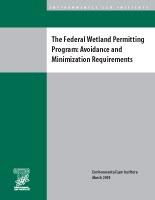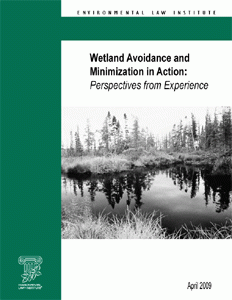Rolling Back the Reg Rollbacks: A Long-Distance Race With Hurdles

President Trump has pursued an ambitious environmental deregulatory agenda that never lost momentum, even in the face of the pandemic. With only weeks to go before inauguration, the outgoing administration is attempting to run through the tape with a long list of items to close out. How will the election of Joe Biden affect this agenda?
The Biden-Harris administration will enter office with a laundry list of agency actions that they will seek to suspend, reconsider, revoke and, in some cases, replace with new and more stringent proposals. In other instances, the new administration may not act immediately, but decide instead to wait for court cases to play out; or it may even decide to retain certain aspects of the previous administration’s efforts. While environmental practitioners anticipate a dramatic pendulum swing, how it plays out in practice will depend on stakeholder dynamics unique to each rule and its status in the regulatory process.
A number of important environmental rules have recently been proposed but not yet finalized (as of Thanksgiving). For example, the Army Corps of Engineers has proposed reissuance and modification of nationwide permits under Section 404 of the Clean Water Act. EPA has proposed pending rules regarding aircraft greenhouse gas standards and National Ambient Air Quality Standards for ozone and particulate matter. And the Fish and Wildlife Service has proposed regulations to exclude areas from critical habitat designation and to redefine “take” under the Migratory Bird Treaty Act. EPA also has several proposals pending that would fundamentally change the rulemaking process itself, including one that would reshape the way the agency calculates costs and benefits for Clean Air Act rules, and another one that would change the role of science.
The race is on to see whether the agencies and the Office of Management and Budget can complete their work in time. The stakes are high, as a new administration can simply allow proposed rules to wither and die on the vine. Indeed, a new regulation does not have the force of law until it is published in the Federal Register. Before that point, it can be rescinded. As with previous administrations, we can expect Biden on Day One to issue an executive order imposing a moratorium on so-called “midnight regulations,” calling for withdrawal or suspension of any rules not yet published.
At some point, OMB will likely order “pens down” and stop processing new rule packages. The ability to finalize these rules in the limited time remaining will be challenged by resource constraints at the agencies and OMB, the worsening effects of the pandemic, a workforce that will be focused on the transition, and competition from other rules waiting in the queue.
There are a large number of Trump’s final rules still stuck in the courts, with legal challenges not yet exhausted. With respect to the most recently published rules — for example, EPA’s coal ash landfill rule, effluent limitations for power plants, and its rescission of new source standards for methane emissions from the oil-and-gas sector — litigation has not yet been filed or is at early stages of briefing. In other cases — such as EPA and the Corps’ withdrawal of the Waters of the United States Rule and promulgation of the Navigable Waters Rule in its stead; EPA’s replacement of the Clean Power Plan with the Affordable Clean Energy Rule; and the Council on Environmental Quality’s comprehensive overhaul of National Environmental Policy Act implementing regulations — litigation is well underway and court decisions could be expected in early 2021. The outgoing administration hopes that opinions will issue before the new administration has the chance to change course. Once new leadership is installed at the Justice Department, government lawyers will have the chance to ask the courts to hold cases in abeyance while the new administration reconsiders.
Based on past experience, reversing course on a vast sea of regulations and agency actions is easier said than done. Numerous judicial setbacks for the Trump administration will serve as lessons learned for a new Biden administration seeking to roll back the rollbacks. The new administration will also have to contend with a wave of Trump-appointed judges, and three new Supreme Court justices, who may be skeptical of executive branch “overreach” and reluctant to extend judicial deference under the Chevron doctrine.
Importantly, the control of the Senate, depending on the outcome of the runoff elections for both Senate seats in Georgia in January, has likely taken an important tool for regulatory change off the table: the Congressional Review Act’s “claw back” provision. This means the new administration will have to slog its way through the rulemaking process to achieve its “reregulatory” goals.
Rolling Back the Reg Rollbacks: A Long-Distance Race With Hurdles.


